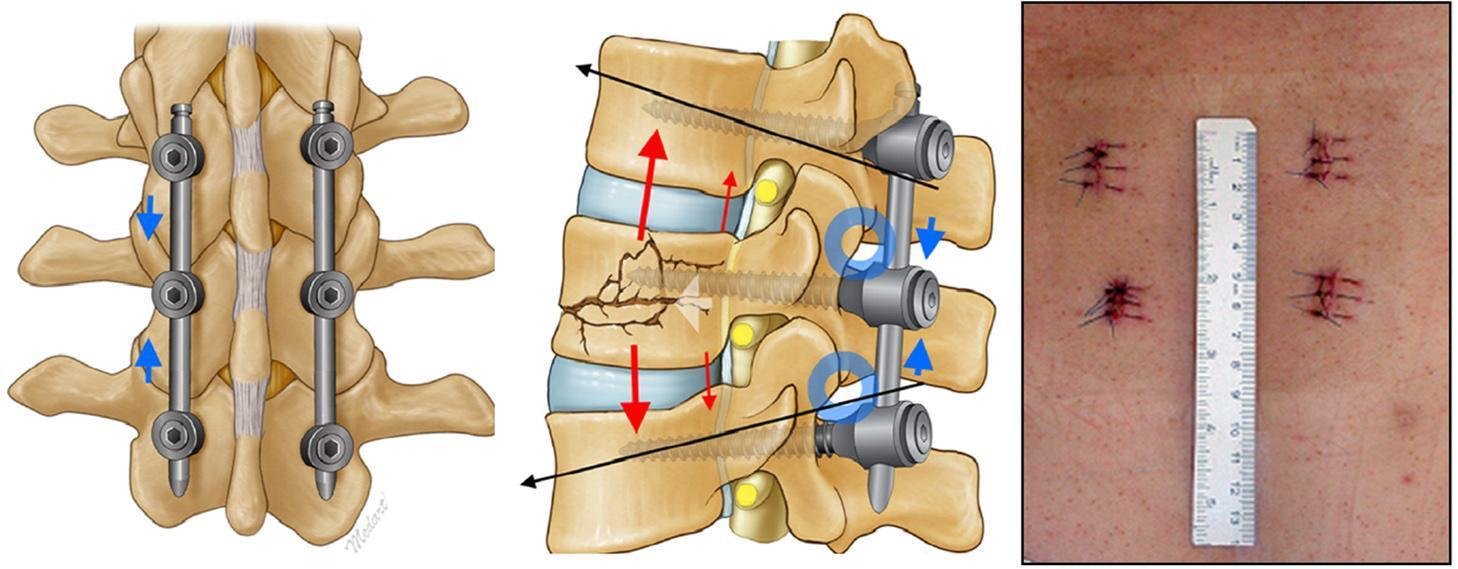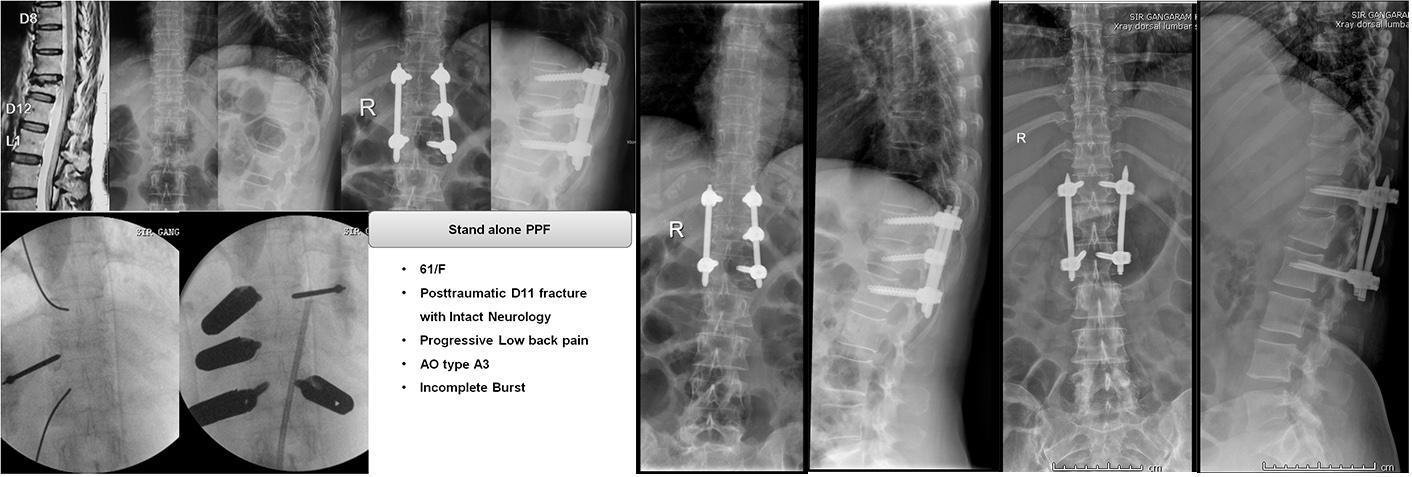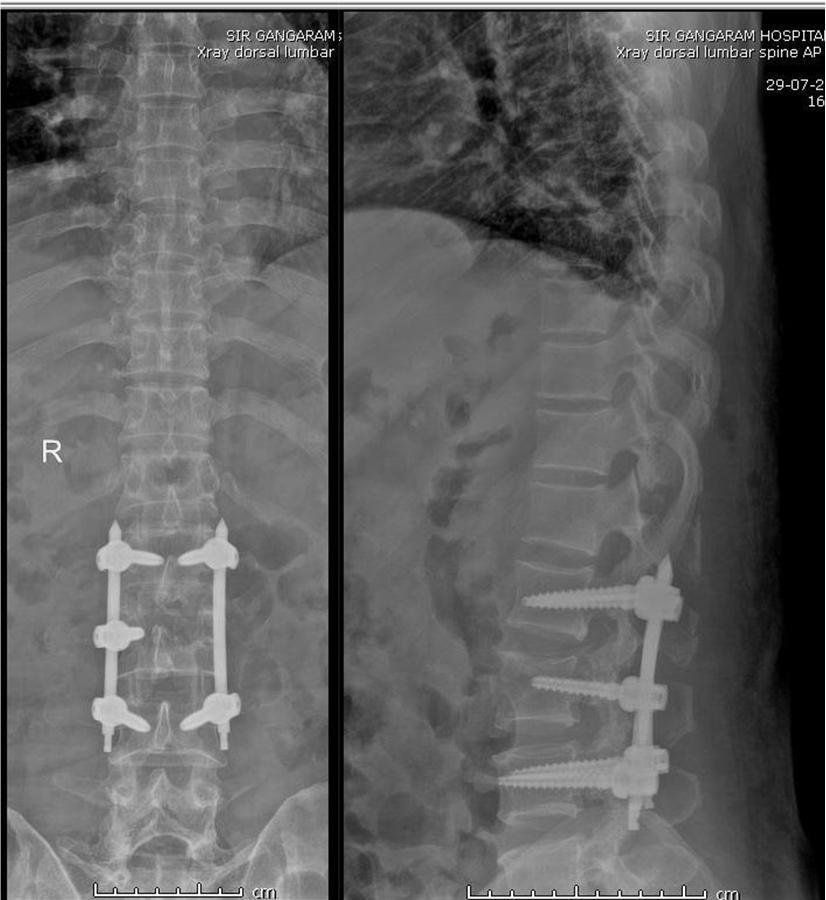

What is Percutaneous Pedicle Screw Fixation?
Pedicle screws are special screws placed into the bones of the spine (vertebrae) to hold them in place. In the percutaneous technique:
-
The screws are inserted through tiny cuts in the skin.
-
A guiding system helps the surgeon precisely place the screws without making large incisions.
-
The screws are then connected with rods to stabilize the spine.

Benefits of the Percutaneous Technique
Compared to traditional open surgery, this method offers:
-
Less Pain: Smaller incisions mean reduced tissue damage and pain.
-
Faster Recovery: Patients often return to normal activities sooner.
-
Minimal Scarring: Tiny cuts result in better cosmetic outcomes.
-
Lower Risk of Infection: Smaller wounds reduce the chance of infection.
-
Reduced Blood Loss: A less invasive approach preserves tissues and minimizes bleeding.
Recovery & Aftercare
-
Hospital Stay: Most patients stay in the hospital for 1-3 days.
-
Pain Management: Pain is usually manageable with medications.
-
Physiotherapy: Gentle exercises may be recommended to improve mobility and strengthen the back.
-
Follow-Up: Regular check-ups ensure proper healing and recovery
THIS PROCEDURE IS USED TO TREAT VARIOUS SPINE CONDITIONS, SUCH AS
-
Spine Fractures: Often caused by accidents or osteoporosis.
-
Spinal Instability: Due to conditions like spondylolisthesis or degenerative disc disease.
-
Spinal Tumors or Infections: When these cause damage to the spine.
-
Failed Back Surgery Syndrome: When previous spine surgeries didn’t achieve desired results.

How is the Procedure Performed?
The surgery is carried out in several steps:
-
Preparation: The patient is given anesthesia to ensure comfort during the procedure.
-
Imaging Guidance: The surgeon uses advanced imaging tools like fluoroscopy to map out the spine.
-
Insertion of Screws: Small incisions are made, and screws are carefully inserted into the pedicles of the vertebrae.
-
Placement of Rods: The screws are connected with rods to stabilize the spine.
-
Closure: The incisions are closed with stitches or surgical glue



